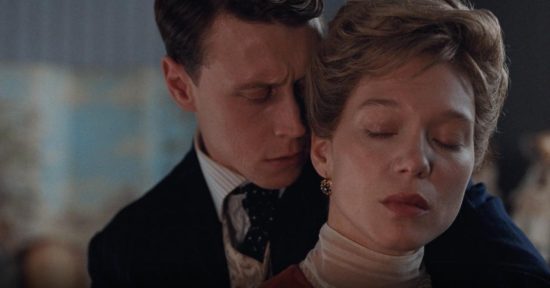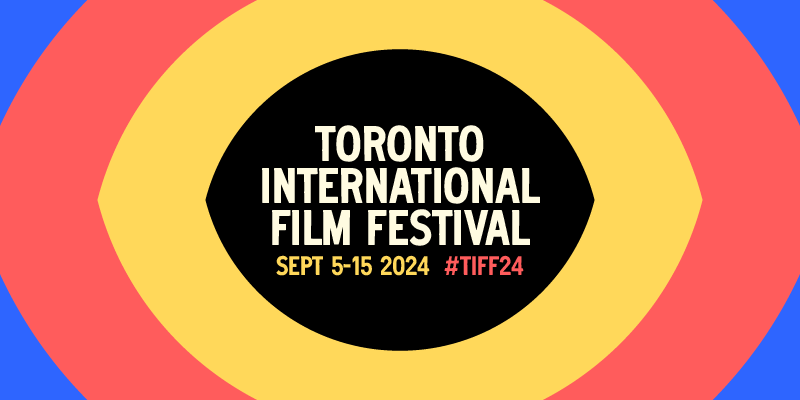Review: The Beast – “A heightened sensorial experience that will hold you captive, if you let it.”
If it’s a literal beast you’re after, I’m sorry to disappoint you. This isn’t another high concept genre-flick with a CGI creature at its villainous core. French filmmaker’s Bertrand Bonello latest entry in his provocateur filmography is a head-scratcher of a mindfuck that demands to be seen (hopefully on the big screen) to be believed. Yet, even without a Hollywood blockbuster budget, there’s no lack of scope and ambition here, proving that compelling ideas, crafty execution and a great cast are all a film needs to win audiences over.
You might be wondering then who or what is this titular beast? Well, according to the source material that inspired the filmmaker – Henry James’ infamous novella The Beast in the Jungle – it’s the unshakeable feeling of impending doom that prevents its protagonist from living his life to the fullest. Translated in thematic terms that’s the fear of love and even more so the fear of opening yourself up to the risk of losing love. But isn’t it better to have loved and lost than to have not loved at all?
That’s the conundrum driving the narrative and specifically, the journey of Gabrielle, the film’s heroine, played with mesmerising naturalism by an outstanding Léa Seydoux. Bonello in fact inverts the roles from James’ semi-autobiographical tale, putting the woman front and centre as the subject of existential anxiety whilst the male counterpart, Louis (an incredibly eclectic George MacKay) is the object of soul-stirring emotion, awakening Gabrielle’s senses. However, this isn’t a straight-up adaptation. The infamous short story is only the foundation upon which the filmmaker has built his own original piece.
The Beast alternates three narratives across three different timelines: Paris in 1910, the year of the great flood, Los Angeles in 2014, when a 5.1 earthquake reminded residents that a “big one” is still overdue and lastly an unspecified location in 2044, which plays out as the film’s “present”. In this not-too-distant future, Artificial Intelligence has taken over and human emotions pose a threat to society’s balance and the lack of conflict. That’s why Gabrielle is forced to undergo a “purification” treatment to expunge her DNA of such humanistic traits by revisiting her past lives and confronting traumas that need overcoming.
The turn of the century Paris section is practically the closest Bonello gets to translating the novella for the screen with lots of the dialogue directly borrowed from Henry James. Here Gabrielle is a renowned pianist who encounters a smitten Louis at a high society ball and being a married woman, she tries hard to fend off his advances whilst coping with her premonition of a looming catastrophe. But what is the actual disaster she’s dreading? The big flood or shattering her marriage to pursue true love? Whatever the answer, Seydoux is just magnificent at conveying her state of overwhelm and Bonello indulges in exploring the romantic melodrama.
The character dynamic gets subverted in the 2014 timeline where Louis is an incel stalking Gabrielle, here a struggling actress trying to make it in Hollywood. This is probably the most unsettling and bizarre portion of the film, extremely evocative of Lynch’s Mulholland Drive not just in setting but especially in tone with the eerie loneliness and alienation and a hypnotising dreamlike quality. The prologue of the movie gives us a taste from this timeline, with Gabrielle working an acting gig in a green screen studio where she needs to “defend herself” from an invisible CGI threat with a knife, a motif that returns throughout the other timelines, as well as the creepy fortune teller figure that our heroine seeks the advice of, hoping to make sense of the foreboding feelings that haunt her.
Whilst Seydoux keeps shining, it’s MacKay who steals the show in these sequences with his almost sympathetic, albeit pathetic misogynist stalker (based on a real-life serial killer) who’s claiming victims on the cusp of the #metoo movement blowing up. And of course, there’s the earthquake, which plays out as the catalyst of a confrontation the filmmaker teases with such unbearable mounting tension that we can’t help but root for it to finally unfold and put us out of our misery.
Finally, the minimalist sci-fi dystopia of 2044 aesthetically feels a bit Cronenberg-like, yet the twisty narrative mechanisms are reminiscent of a Nolan-esque cinematic puzzle. Serving as the film’s present, this emotionless, antiseptic future is the pivotal part of the story. Here it seems like the walls are closing in on Gabrielle and she’s ready to give in by accepting the homologation procedure but what if exposing herself to such a torture is her act of defiance?
Trying to unpick the plot any further would be a disservice to the viewers, not just for the sake of avoiding spoilers but because The Beast is a heightened sensorial experience that will hold you captive, if you let it. Clocking in at nearly 2 and a half hours, this is the kind of cinema destined to divide, not necessarily in a simplistic manner of love or hate but most importantly in terms of how willing you are to trust the filmmaker’s vision and embark on the incredibly thought-provoking and soul-stirring journey he has created.
Detractors may find it slow-burning, confusing and knowingly too self-aware of its cerebral nature and big ideas. I was intrigued from the opening sequence, instantly entranced by Léa Seydoux’s emotional command of every frame she is in and in awe of George MacKay’s histrionic talent at transforming so deeply with every role. Bonello’s unique pastiche of genres and styles is a remarkable achievement of cinematic artistry. It toys with uncomfortable existentialist themes that resonate with the current state of humanity, inviting us to reflect and act rather than ignore and escape. After all, fear is good because fear is what makes us feel alive.
The Beast is in UK cinemas now via Vertigo Releasing.












